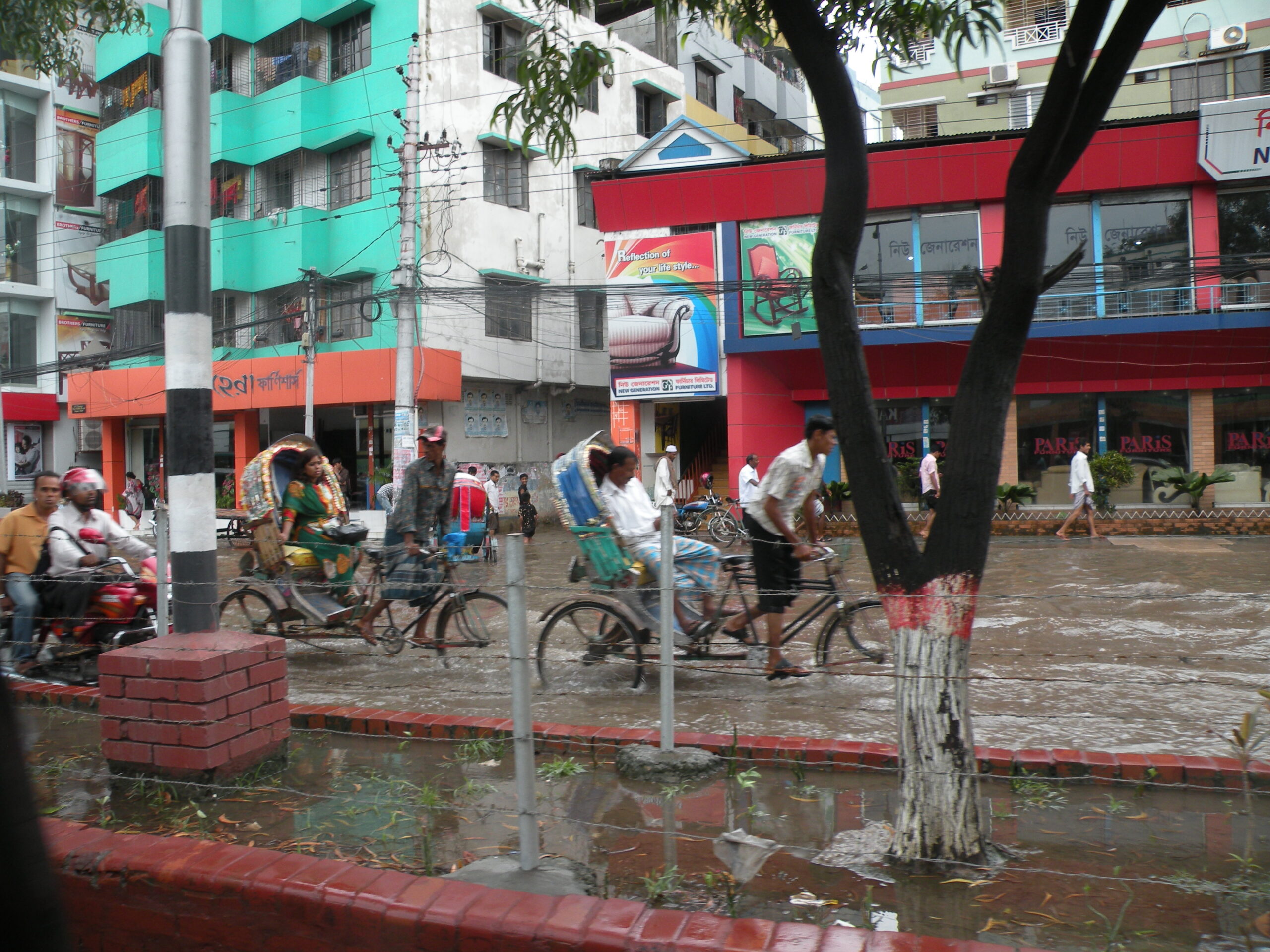
What can neighbor countries do to prevent diarrheal diseases caused by floods?

Residents in Dhaka, Bangladesh, bike through floodwaters. Photo: PATH.
When the explorer David Livingstone first saw the magnificent Victoria Falls on the Zambezi River, he was captivated by its breathtaking beauty. Originating in Zambia, the Zambezi River winds its way through five other countries before finally reaching the Indian Ocean. The flow of water in this river is greatly influenced by climate events, particularly rainfall.
As there is no such thing as national borders in nature, countries must look beyond these jurisdictions to prepare for flooding and manage the risk of diarrheal diseases.
Take, for example, Bangladesh, located in the world’s largest Ganges River Delta. The country shares 54 transboundary rivers with neighboring India and recently experienced catastrophic flooding impacting millions of people in the region, overwhelming inadequate sewage systems and sanitation facilities. As a result, safe water sources become contaminated with human waste, leading to an increased risk of diarrheal diseases.
Even as the flood waters recede, people in flood-affected communities of Bangladesh find themselves trapped in waterlogged conditions. Consequently, there has been a rapid outbreak of diarrhea and other waterborne diseases, especially among children in poor communities. This worsening situation puts an additional strain on an already struggling healthcare system. Strengthened information-sharing across borders about common rivers could have helped communities prepare and mitigate flood-induced outbreaks of diarrheal diseases.
We can look to other regions for examples of collaboration, such as the initiatives being implemented in the Zambezi River Basin, which are helping address the impact of recurring floods and droughts in all the countries the river touches, including Zambia, Zimbabwe, and Mozambique.
Communicating the forecast for rainfall patterns and river conditions well in advance of any potential flash flood events is one practical way to protect at-risk communities. Transboundary river agreements will help avoid situations where countries located upstream unilaterally control water flow, which can lead to catastrophic flooding downstream.
It is exceptionally challenging for any one country to handle the extensive damage caused by annual monsoon floods resulting from river overflow. In light of the recent devastating floods, Bangladesh has proposed a mechanism with neighboring India to handle water-sharing and manage flood risk. It is crucial that these discussions continue to ensure effective flood preparation and response.
From the Zambezi River Basin to the Ganges River Delta, cross-country collaboration is the way forward to manage the natural resources that belong to us all.


